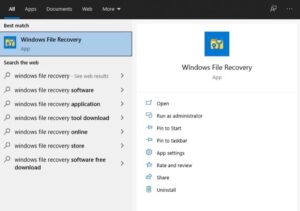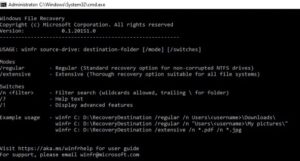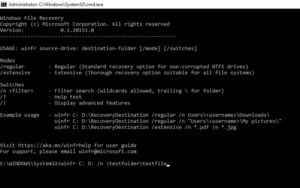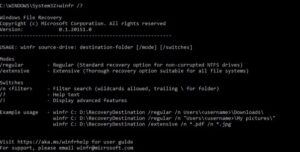How To Recover Deleted Files On Windows 10 Using Windows File Recovery
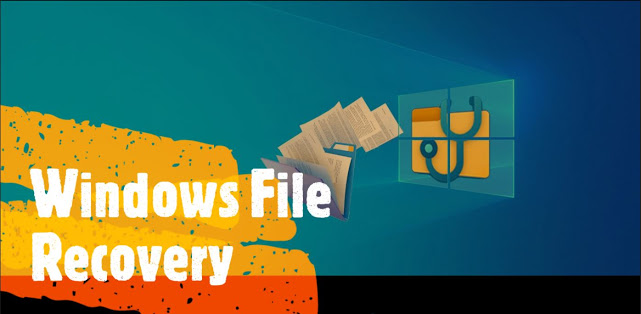
This post will explain windows file Recovery tool. Do you frequently find yourself in a circumstance where you accidentally erase files from your Windows machine & end up apologizing on your gaffe? Well, now you don’t ought to, thanks to Microsoft’s just newly released tool, Windows DATA Recovery, that lets you regain deleted and corrupted data on your computer with no hassle.
How To Recover Deleted Files On Windows 10 Using Windows File Recovery
In this article, you can know about windows file Recovery tool here are the details below;
Despite the fact that the capability to recover deleted files isn’t something brand-new, the solutions readily obtainable in the past have not been as trustworthy and hassle-free, particularly for the typical user. However with the intro of Microsoft’s own file recovery tool, you can now quickly recuperate lost data without needing to download any third-party software application. Also check acresso software manager.
Windows File recovery is offered for free on Microsoft Store and is compatible with laptops and desktops running Windows 10 (construct 2004 or later). Here’s our design to help you use Windows data Recovery to recover lost files on your Windows 10 computer.
What is Windows File recovery ?
To give you a guide, Windows File recovery (or WFR) is an in-house tool from Microsoft. It is essentially a command-line (CLI) energy that provides you the ability to recuperate unintentionally erased files or corrupted files from various storage devices such as drives (HDD and SSD), thumb drives, and sd card on Windows.
How Computer Systems Manage Deleted Files?
Before we dive into retrieving deleted data, it is vital to comprehend how computers deal with erased files.
When a user deletes a data on their Windows pc system (consisting of the recycle bin), depending upon the file system in place, the following changes occur:
i. FAT– Except for the very first character of the file name, the directory entry, which holds additional metadata about files, remains the same. Furthermore, the list of disk clusters against the file in the FAT (File Allowance Table) is erased, & the division is marked as readily achievable.
ii. NTFS– Entry in the MFT (Master File Table), which shops submit information in NTFS is marked as unlinked, but
it still stays on the disk.
Keep in mind: NTFS has better recoverability than FAT.
In layperson’s terms, when you erase a file from your maker, it is not gotten rid of immediately from the drive. Rather, the bit indicating its (file’s) area on the storage drive is erased, which makes it unreadable to the os. As a result, considering that the operating system can not find this file, it treats the file’s storage location as unused until some brand-new data overwrites the space on the drive.
What this suggests is that, unless the space– just recently marked as ‘complimentary’ or ‘unused’– is overwritten with new information, the erased files can be recuperated in that small time window. So the best way to increase your possibilities of recuperating deleted files is to ensure you do not include new files or set up new programs on your computer system.
What Devices and Formats Can WFR Recover?
Windows File recovery assists in recovering deleted and infected files from HDD, SDD (non-TRIM), thumb drive, & memory cards. It helps NTFS, FAT, exFAT, and ReFS file systems, & can recover JPEG, PDF, PNG, MPEG, Workplace files, MP3 & MP4, and ZIP files. Also check best Data Recovery For Mac.
How to Utilize Windows File Recovery to Recuperate Lost Data
Depending on the sort of file and storage type, there are a few different methods to recuperate files using WFR.
Installing Windows File recovery
1. Go to Microsoft Store on your pc, look for ‘Windows File Recovery’, and download the tool. Alternatively, click this link to download it on your computer.
2. As soon as set up, run the tool as administrator. To do this, struck the Windows key and look for ‘Windows data Recovery’. When the tool develops in the result, right-click on it and choose Run as administrator.
Using Windows File Recovery
With WFR running, enter the recovery command utilizing the following syntax:
winfr source drive: destination drive: [/switches] Here,
i. source drive specifies the source of the lost file
ii. destination-drive defines the drive where you wish to store the recuperated files
iii. switches define arguments to great target a file or folder
Now, depending on the kind of file you wish to recuperate, Windows File Recovery uses two modes of operation, particularly:
i. Routine– perfect for recovering just recently deleted files in the NTFS file system.
ii. Extensive– perfect for recuperating NTFS-stored data that are deleted a while ago, or after formatting a disk, or after a disk weakens corrupt. It can likewise be used with FAT and exFAT files in any situations.
The previous version of Windows File Recovery used three modes for recuperating deleted files: Default, Section, and Signature. So if you currently had WFR on your computer, ensure you upgrade it to the latest version.
To prevent confusion around file systems and assist you determine the one used on the storage medium you mean to recuperate, here’s what you need to know–.
i. NTFS– Used on the majority of storage devices like HDD, SSD, together with thumb drives with more than 4GB storage.
ii. FAT and exFAT– Used mostly by memory cards and thumb drives with less than 4GB storage.
iii. ReFS– Utilized on Windows Server & Workstations.
Note: Compared to an HDD, the completion rate of recuperating information from an SSD is fairly low, mainly because of information complexity and TRIM functionality.
For an even in-depth look at the different switches and the supported modes, describe Microsoft’s official blog on WFR. Also check data classification policy.
Windows File recovery Command Variations.
Moving right along, let’s now take a look at various variations of commands and how you can utilize them to recuperate various files. As discussed earlier, the default syntax accepted on WFR needs you to point out 4 things: winfr, source drive, location drive, and switches, where the source drive and destination drive require to be various.
For instance: winfr C: D:/ n \ testfolder \ testfile \.
With the above command, we are investigating the tool to recover a file named ‘testfile’ placed in the ‘testfolder’ paper on the ‘C’ drive & put it on the ‘D’ drive.
Recovering a Particular File.
If you wish to recover a special file that you erased from your computer, here’s the command to filter it out and recuperate:.
winfr C: D:/ n \ Users \ smol and Documents \ testfolder and testfile.txt.
Recovering Numerous Similar File Types.
If you need to recuperate multiple files of the corresponding (file) type, say.JPG, here’s how to do it:.
winfr C: D:/ n \ Users \ smol and Documents \ testfolder \*. JPG.
Recuperating an Entire Folder.
If you want to recuperate a whole folder that you erased accidentally, WFR lets you do that also. Here’s the syntax you require to utilize:.
winfr C: D:/ n \ Users \ smol \ Files \ testfolder \.
For more information innovative commands, run:.
winfr/? or winfr/!
Restoring Deleted Files on Windows.
Windows File Recovery is one of the very best tools that can help you recover the majority of your deleted files on Windows 10. So if you inadvertently erase a file or folder from your maker or when a software application conflict erases your important files, you can utilize WFR to recuperate them.
One of the important points to note with file recovery is that the success of recovery depends on specific factors. However, you can increase your opportunities of recuperating your lost files by guaranteeing that you do not overwrite the data system and by using the right command for your storage type.

